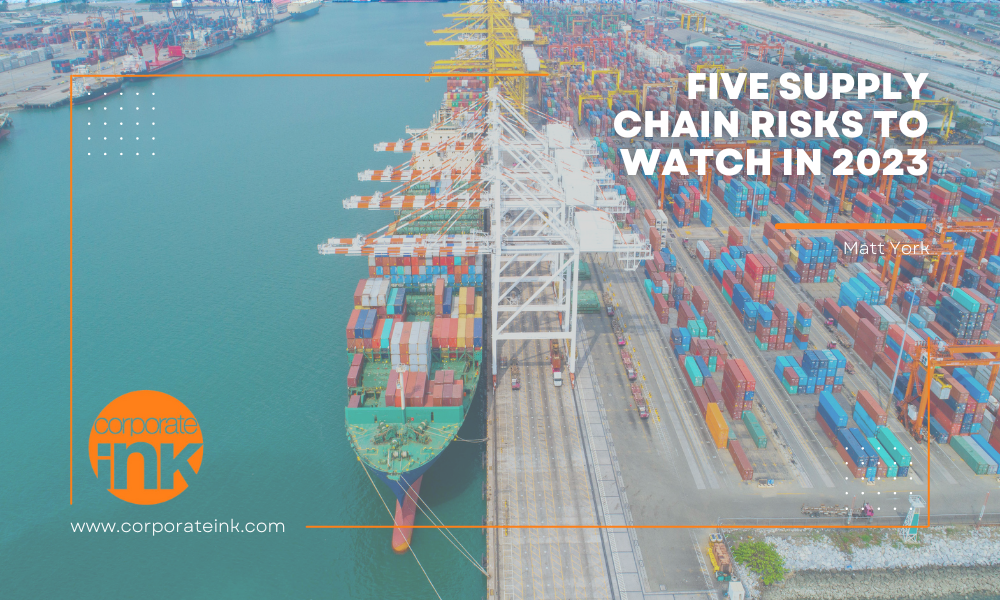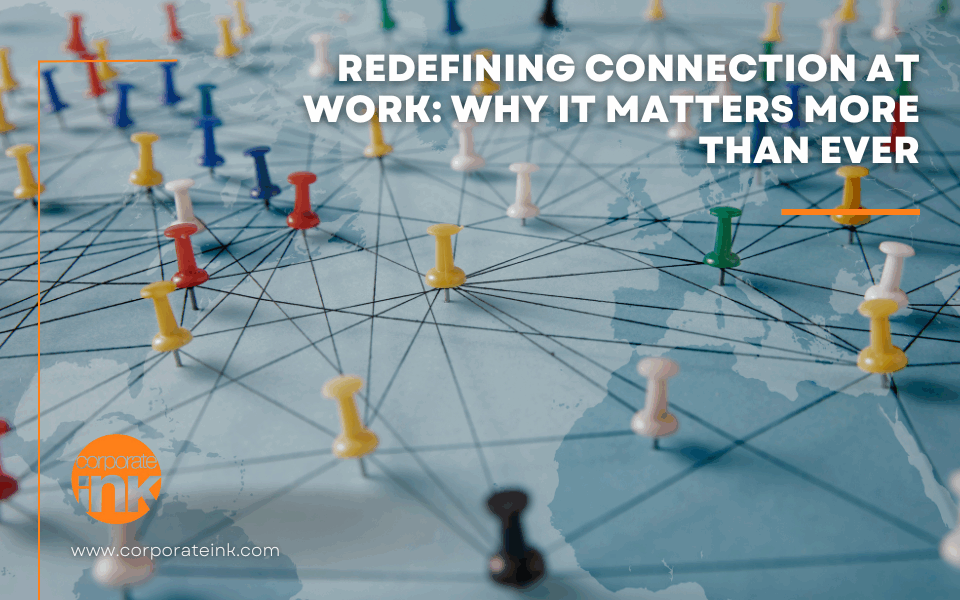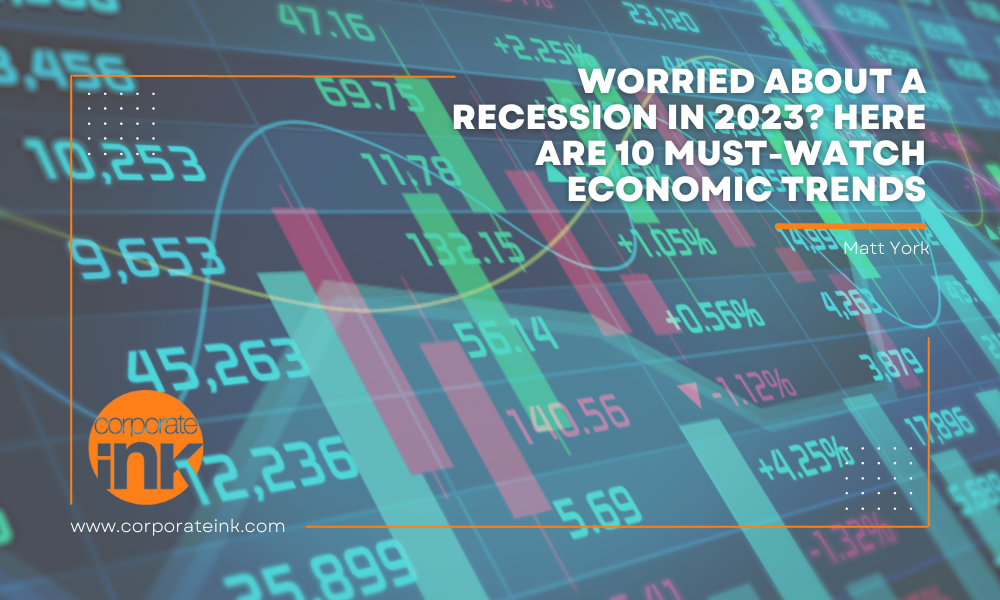
Worried about a Recession in 2023? Here are 10 Must-Watch Economic Trends
January 9, 2023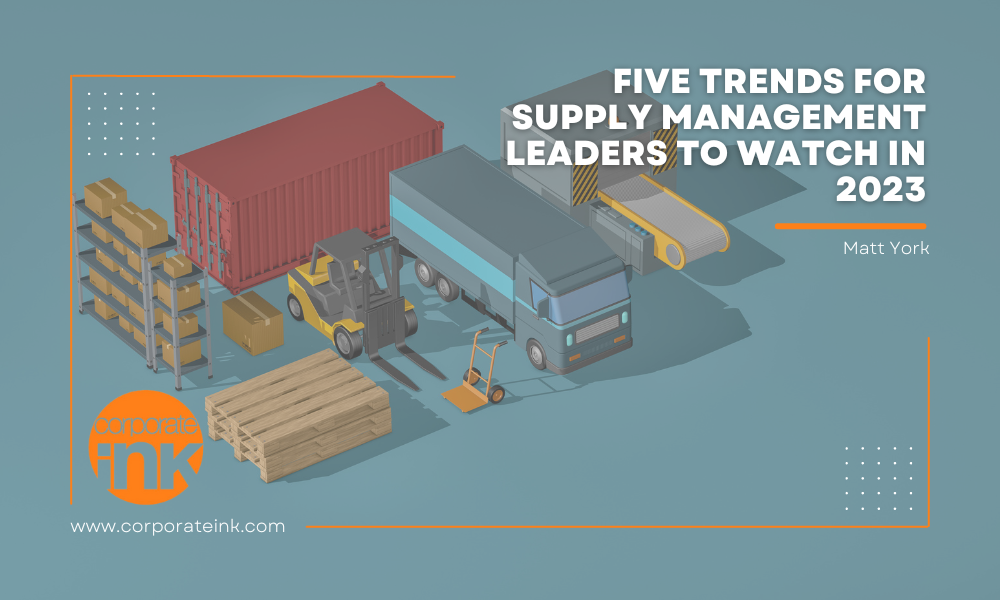
Five Trends for Supply Management Leaders to Watch in 2023
February 13, 2023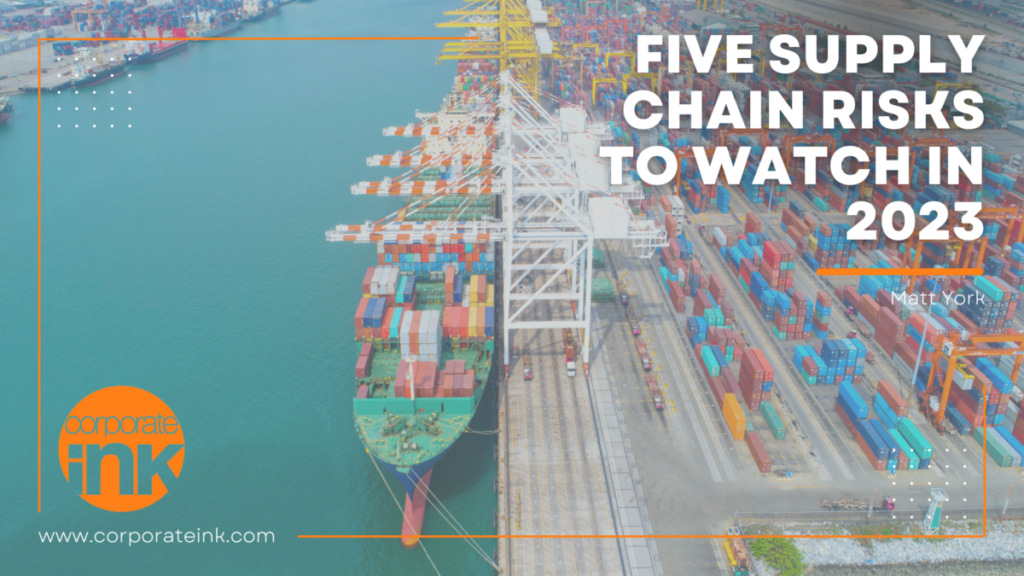
The same risks that have threatened global supply chains in the last several years will persist through 2023.
It’s like DeJa’Vu all over again.
While many companies have gotten better at monitoring and mitigating threats, supply chain risk is a shape-shifting beast that has many heads. Let’s examine the top five risks our supply chain and risk technology clients are watching this year.
1. Economic Risk
The new year begins amid significant global economic uncertainty, with economists forecasting the likelihood of a recession in the U.S. between 35% and 100%. Depending on who you ask, the economy was, or was not, in a recession in 2022; or it will, or will not, occur in 2023.
Either way, the fear of a recession continues to impact the global economy, as large-scale layoffs regularly make headlines and companies consider cutting excess or non-essential budget items. Here are other potential ways a recession could impact procurement and supply chains in 2023:
- Internal impact: shrink operating budgets; prioritize cost-cutting measures over non-traditional value creation; hiring freezes or further layoffs; further pressure to “do more with fewer or the same resources”
- External impact: lead to supplier insolvencies and failures; jeopardize production, on-time delivery of goods, or service delivery; halt or reverse reshoring or nearshoring trends and/or return to low-cost country sourcing; rise in environmental incidents and human rights abuses
Even a small recession could be disastrous for the global economy, since small- and mid-sized organizations would bear the brunt of the impact because they tend to have the lowest operating margins to absorb shocks to the economic system. Still, no one knows whether the bottom will fall out from underneath the global or US economies, or what the next order of effects would be. Watch these economic indicators like a hawk.
2. Geopolitical Risk
The world is dangerous – and globalization brings seemingly distant dangers home. In a hot second, cold wars can flare up and simmering conflicts can boil over. Consider the macro-level impacts of hot wars between these geopolitical foes: China-Taiwan; North and South Korea; Iran-Israel; India-Pakistan. Now recall the most destabilizing geopolitical event of 2022: Russia’s expanded invasion of Ukraine.
Now in its tenth year, the Russia-Ukraine war has been an economic and humanitarian tragedy. It’s shattered Ukraine’s infrastructure and economy; killed or injured thousands of non-combatants; created roughly 15 million internal and external refugees; and deepened global food insecurity. Europe’s largest war since WWII is likely to get worse before it gets better.
Undeterred by Russian President Vladimir Putin’s escalatory threats, especially veiled nuclear threats, allied nations have sustained Ukraine’s defenses and economy without entering into the conflict. Nonetheless there are continued consequences for all parties. Russia decreased, then stopped natural gas shipments to Germany, France, and other European consumers via the Nord Stream 1 pipeline, forcing European nations to scramble to find alternative energy sources before the winter. Other Western nations have imposed sanctions on Russia’s state-owned oil and gas companies, prohibiting their imports. These moves have impacted Russia’s economy but not domestic support for its war in Ukraine.
As Western nations transfer more lethal arms to Kyiv, the war gets costlier and more dangerous for Ukraine, its backers, and Europe, but also the rest of the world. Though weakened, Russia maintains the ability to retaliate symmetrically and asymmetrically. For example, Moscow has demonstrated its willingness to execute cyber attacks on adversary nations, such as the 2019-2020 Solar Winds hack.
3. Epidemiological Risk
Unpopular opinion: the Covid-19 pandemic remains. New variants (e.g., the Omicron sub-variant, XBB) and the case surges they cause will continue to impact manufacturing into 2023 and could contribute to another recession.
China’s failed “zero-Covid” strategy, lockdowns, and (ironically) its re-opening – forced by popular revolt – contribute to the resurgence of the virus, thousands of hospitalizations, and factory cities shutting down again. Covid, RSV, and influenza are also triple-teaming children in the US. Disruptions to pharmaceutical manufacturing and a concurrent need for pain relievers have created another supply-demand mismatch. If cases persist or intensify in 2023, as expected, we could see a cascading effect like what the world saw in early 2020, but hopefully with less-severe cases.
4. Cyber Security Risks because of Economic, Geopolitical Risks
The cybersphere is risky terrain for businesses, where more than 80% of a company’s cyber incidents occur due to compromised suppliers. We expect cyber risk to increase in 2023 due to a confluence of factors:
- Exploiting a Crisis: Criminals will likely use a potential recession to target more online users and companies, infiltrate and exploit vulnerable enterprises, extort through ransomware, and conduct other acts of cybercrime – as they did during the 2008-2009 recession.
- Asymmetrical Russian Response: Russia notoriously conducts malign cyber operations, including attacks on critical infrastructure, espionage, surveillance, intellectual property theft, and petty cybercrime. We expect this activity to increase in 2023, particularly if the Russia-Ukraine war escalates or deteriorates further for Moscow.
- China’s National Interests: If tensions flare over geopolitical crises (Taiwan, trade agreements), Beijing and its loosely affiliated hacker network may retaliate against adversary nations and increase attacks on businesses, especially government contractors, for intellectual property.
5. ESG Regulatory Compliance and Related Risks
Organizations will strain in 2023 to address environmental, social, and governance matters. Consumers already expect businesses to engage in ethical and sustainable business practices, including sourcing, procurement, and supply chain management. Failing here could cost businesses their customers, market share, and potentially the brand itself.
ESG laws and regulations, such as the US Uyghur Forced Labor Prevention Act and the German Supply Chain Due Diligence Act, now require companies to gain visibility into their extended supply chains to report on their risk exposure for modern slavery, carbon footprint, sustainability, diversity, equity, and inclusion, and other ESG categories. Non-compliance can result in nearly million-dollar fines, seized imports, operational disruptions, tarnished brand, and even business failure.
Look for other ESG laws and regulations to pass in 2023, such as:
- A potential SEC rules change that would require Scope 3 emissions disclosures;
- A Scope 3 emissions addition to the US Government’s Federal Acquisitions Rules;
- The EU Corporate Due Diligence Directive that has a wider scope and harsher penalties than Germany’s law and would require EU nations to pass corresponding national laws;
- The EU Regulation on Deforestation-Free Supply Chains would mandate operator due diligence, product and raw materials disclosures, and impose fines of at least 4% of a company’s revenue within a particular member state.
Corporate Ink’s supply chain, procurement and enterprise risk clients are at the forefront of helping the Global 1,000 identify, mitigate and combat vulnerabilities.
If you’re a supply management or third-party risk technology provider with tech that can help enterprises avoid or mitigate these risks, 2023 could be a big year for you.
Ready to take the next step? Contact us today for a complimentary consult or download our latest report – 10 marketing and PR strategies for supply chain technology companies.


